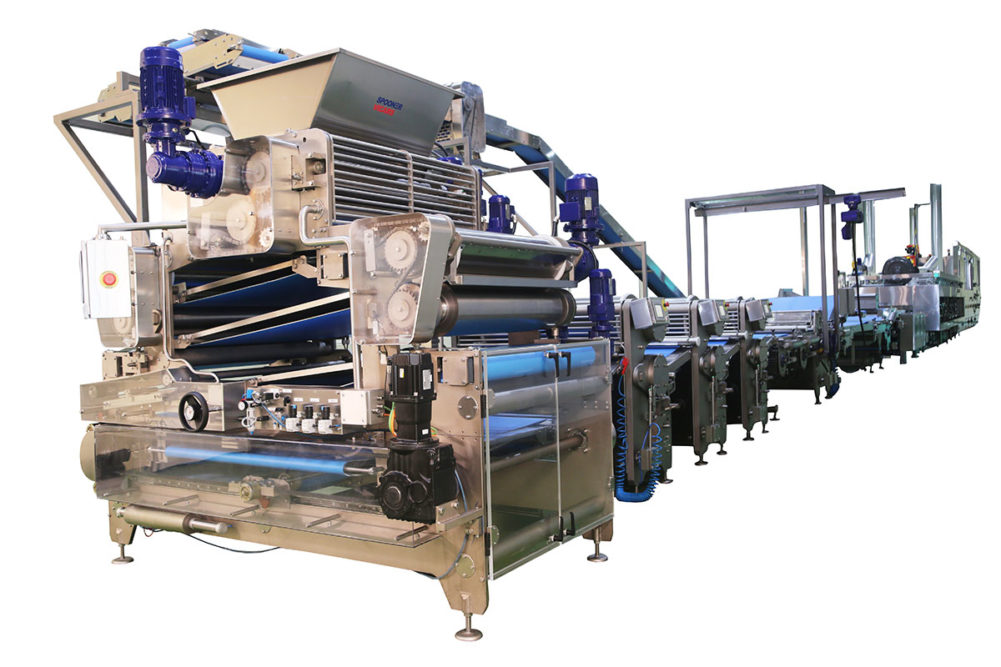Gluten-free, clean label and other better-for-you (BFY) crackers often require a different approach to baking to obtain an appealing texture that’s delicate and crispy or with a hearty bite that’s not so dense that it makes a person’s teeth hurt.
“Flexibility is key to develop the desired flavor notes and textures that the consumer is looking for, so the baking curve needs lots of adjustments with adequate heat and energy,” said Kevin Knott, technical sales manager, Bühler Inc.
Dan Christie, sales manager, North America, Spooner Vicars Bakery Systems, a Middleby Bakery company, suggested that the emerging popularity of hybrid ovens allows bakers to produce everything from snack and water crackers to specialty crackers made with alternative flours.
Specifically, he recommended starting with direct-gas-fired (DGF) followed by convection heating for the greatest consistency.
“We find that adding one or two zones of convection heat at the end of an oven works very well with direct-gas-fired zones on the front,” he said. “Convection smooths the process and product coloring at the end. If you have product weight inconsistences for whatever reason, the convection section will even the colors out. That’s why cracker producers like hybrid ovens that can control the bake better.”
[Related reading: Cracking the code on specialty cracker processing]
Ken Zvoncheck, director of process technology, Reading Bakery Systems, pointed out that bakeries often laminate cracker doughs so that they bake better and create a softer textured product in a DGF oven.
“If we ran a dough sheet without any lamination in a DGF oven, it would likely come out quite hard,” he said. “That’s why lamination came to the forefront. Now we can layer the dough, run it through these DGF ovens with intense heat and still get a light, airy texture as opposed to a dense texture without lamination.”
Hybrid or convection ovens, he added, allow bakers to create thin-sheeted or non-laminated doughs with greater control of the bake in a smaller footprint.
Additionally, he said, the way the heat is applied to these crackers can maximize their development. Typically for laminated crackers, a bakery will use a traditional bell curve profile where the process starts at a low temperature to increase the development of the cracker, then raises the temperature to extract the moisture and set the product and end up at a lower temperature to adjust the final color.
Because they contain more moisture and tend to be thinner, gluten-free and other BFY crackers require a high-to-low baking profile.
“We do this for several reasons,” Mr. Zvoncheck said. “One is to set that cracker. These crackers tend to be more dense, so it takes more energy to take the extra moisture out of these crackers. If we hit them early with heat, that residual heat will carry through to the rest of the oven, giving us an efficient temperature profile because the heat will follow the cracker and heat the remainder of the oven.”
He pointed out that specialty crackers made with alternative flours tend to be thinner, and that’s not by accident.
“When we make these thinner, they’re going to be crispier,” he said. “The thicker you go, the denser and harder that texture will be. That’s why we see these newer crackers from alternative flours looking thinner like a chip or a crisp, and it’s also easier to bake them out as well.”
When it comes to making gluten-free and other specialty baked snacks with alternative flours, it doesn’t require a safecracker to unlock flavors and textures. It just takes a different approach to crack the code for each product.
This article is an excerpt from the November 2021 issue of Baking & Snack. To read the entire feature on Cracker Processing, click here.





